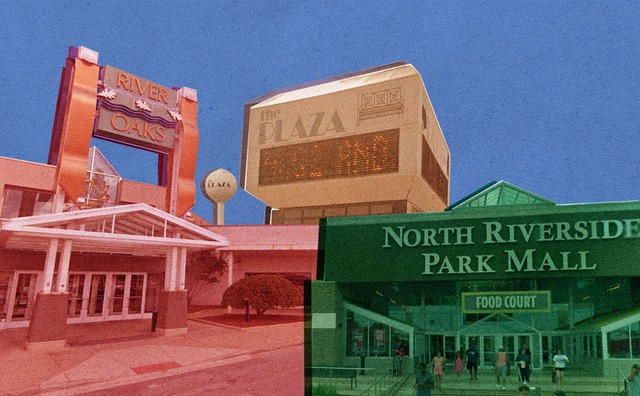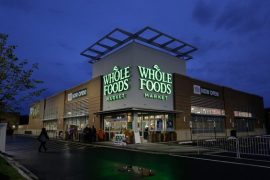Chicagoans reminisce about hanging out at area malls such as Evergreen Plaza, North Riverside Mall and River Oaks. Graphic by Tyger Ligon for The TRiiBE®
No matter what side of the city you live on, many Chicagoans are flooded with memories at the mention of their favorite shopping malls. North Riverside Mall, Evergreen Plaza, Ford City, and River Oaks are just a few of the area malls that shaped the teen years of Gen Xers_ and Millennials alike.
“This guy I had a crush on worked at Carson’s [Pirie Scott], and we went every single Saturday to try to bump into him at work, Grand Crossing native Sheree Anderson said, recalling her teen years. She’s now 48 years old. “We had to coordinate our watches. We didn’t have [cell]phones. Everybody had to look at their watch to see what time it was, and we would have to meet back at Carson’s by 3 o’clock.”
For Anderson and her friends, once she started driving in high school, they would go to River Oaks and Evergreen Plaza to enjoy everything both malls had to offer. Being at the mall in the 1990s was a playground of freedom during those transitional years from childhood to young adulthood. Also, malls were a safe space for Black Chicagoans; many of who were growing up in underserved communities with high crime rates.
Anderson said that being at the mall helped keep them safe while allowing them to be kids.
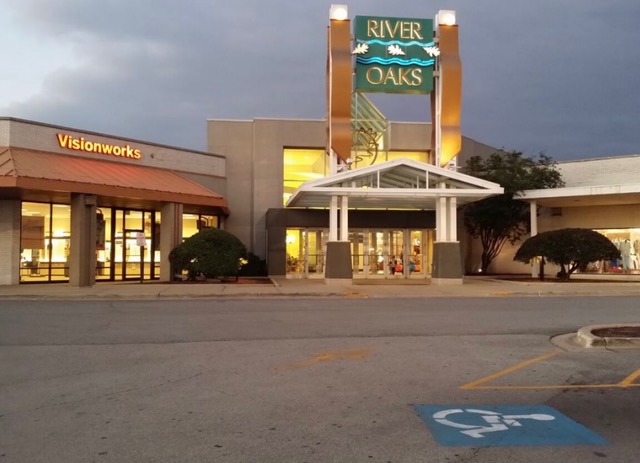
“That was somewhere we could be us,” Anderson explained. “The workers looked like us. I don’t ever remember being there and [a stranger] followed us or anything like that.”
However, as Anderson grew into adulthood and motherhood, she witnessed a shift in mall culture. She remembers going to River Oaks in 2022 and seeing that it was a shell of what it used to be.
Although River Oaks initially opened as an outdoor mall in the 1960s, the owners at the time had plans to expand it. By the mid-1990s, owners enclosed the mall and added 80,000 square feet along with new tenants, making it the largest indoor mall in the South suburbs, according to Crain’s Chicago Business.
According to Crain’s, Namdar Realty Group and partner Mason Asset Management bought the 1.3 million-square-foot River Oaks for $26.3 million in 2017.
But the mall faced many challenges in its later years. In 2013, two of the mall’s anchors — Carson Pirie Scott and Sears — closed. And its home, Calumet City, lost about 5 percent of its population between 2000 and 2017.
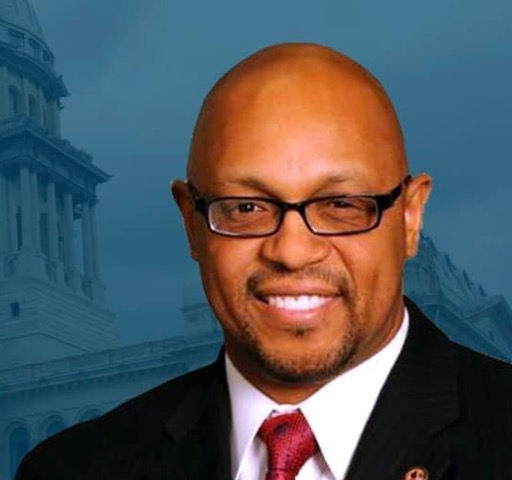
To reinvigorate the mall today, Calumet City mayor Thaddeus Jones wants to build an indoor water park on the former site of the Sears store. There is a proposal on the table to create a new section of the mall called Southland Live Casino, where a new 150,000-square-foot casino and entertainment complex would be built near Macy’s.
“You want your child to experience some of the things you’ve experienced,” Anderson said. “My daughter and her friends [are] not going to experience a mall shop.”
With online shopping and thrifting increasingly growing in popularity over the years, mall culture has shifted. For many, the mall is simply not the first priority for shopping as it once was in decades past.
The shift started before the COVID-19 pandemic. In 2016, according to a Pew Research Center survey, roughly eight out of 10 Americans shopped online. During the same survey in 2000, just 22 percent of Americans had made an online purchase.
Add in the COVID-19 pandemic, which led to many major and minor retailers shuttering across the country. Due to pandemic-era habits such as hybrid work, many malls across the country are transitioning into lifestyle centers, mixed-use spaces resembling urban promenades anchored by restaurants and entertainment, according to ModernRetail.
In Chicago, specifically, add in the increased policing of youth, curfews and incidents of violence that sometimes take place at the mall. This also makes the mall an unattractive place for young adults, a population that historically has frequented and spent money at the mall.
The Water Tower used to be cool, but it got weird when too many kids used to go there and they started banning kids,” 23-year-old Kendall Mensah said. “The rules shied me away.”
Although people don’t share the same excitement for malls as they once did, many in the Chicagoland area still hold their memories close to their heart, including those adventures of taking dream shots at Magic Photos and buying outfits at streetwear stores like The Lark, DTLR and Jimmy Jazz.
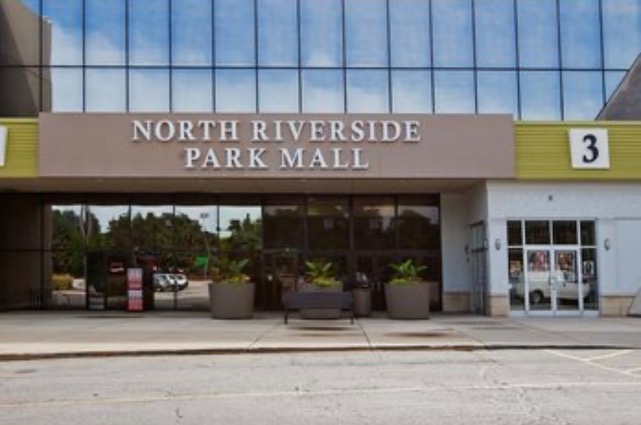
Growing up in the early 2000s, South Side native Jawuan Johnson, 28, recalled having a successful second date ever at North Riverside Mall in Chicago’s western suburb.
“It was like the club for us,” Johnson said. “We just went to a mall to mess around and hang out for a cool vibe.”
West Englewood native Sheryl Coleman, 48, reminisced about her memories at the strip of stores along 63rd & Halsted and at Evergreen Plaza, the latter she affectionately called by its generational nickname, “Ever Black.” Both shopping areas allowed her to express herself through fashion. She collected starter jackets, starter hats, and the hottest gym shoes way before the hypebeasts and sneaker culture.
“I purchased my first Dooney & Bourke bag by myself at Evergreen Plaza,” Coleman said. “It felt like a rite of passage that you were being allowed the opportunity to do things by yourself, and the safest place to do something by yourself was the mall.”
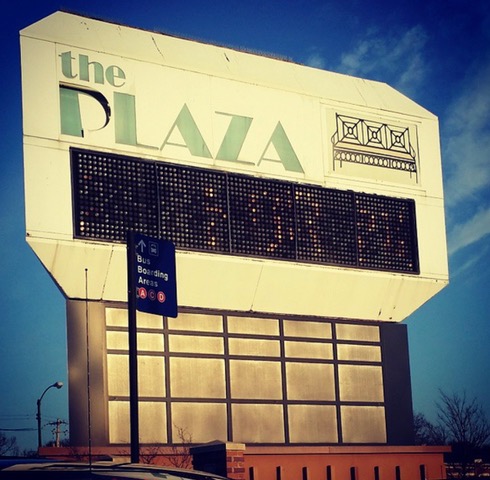
Evergreen Plaza, located on the border of Chicago and south suburban Evergreen Park, first opened as an open-air mall in the 1950s and later enclosed in the 1960s. But soon, it too, struggled with changing times and closures. Anchor stores such as Montgomery Wards and Circuit City went bankrupt and shuttered, and incidents of crime led to its movie theater closing and being demolished in the 2000s.
Coleman remembers the mall’s name change to The Plaza. She also remembers when plans were announced to demolish the mall in the 2010s.
“Evergreen doesn’t exist. It’s an Ulta [and] TJ Maxx. So that part of my childhood is completely gone,” Anderson said.
Kenyatta Victoria is a freelance contributor for The TRiiBE.


